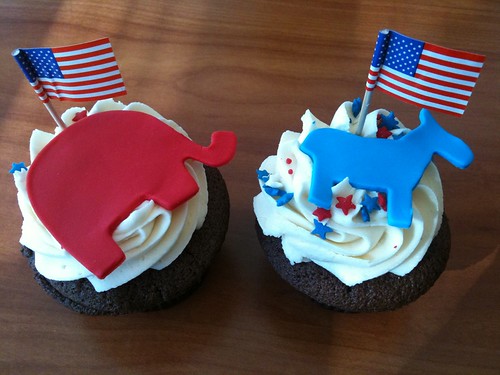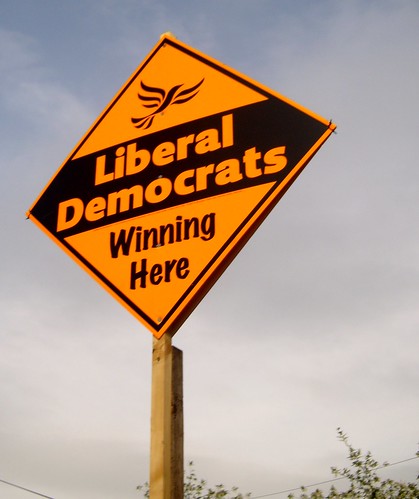
‘elephant or donkey?’
courtesy of ‘ekelly80’
DC is a special place: it’s the center of the country’s political power, but it has little to no political power of its own. And every election season, our city is cast as just about the worst possible place in the world. The District is notoriously left-leaning, but we’re about to welcome a lot more right-leaning representatives and staffers to the area too. This week’s Mythbusting will tackle some political myths. Is DC one of the most liberal districts in the country? And what about the region as a whole?
So, is the District one of the most liberal districts in the country? The answer is yes. DC residents have consistently voted Democratic in elections for decades. Back in 2008, Obama won an astonishing 92.5% of the vote in DC, the highest rate of any jurisdiction in the country. And while Obama’s job performance ratings have gone down in the past couple years, DC still loves him: 85% of District residents still approve of his job performance, according to the Examiner.

‘They did’
courtesy of ‘James Bowe’
The District isn’t alone in its Democratic-leaning voting tendencies: About 3/4 of Arlington County residents voted for Obama back in 2004, and it is pretty consistently a Democratic stronghold (Jim Moran has been representing Virginia’s 8th District– which includes Arlington and Alexandria– for 20 years now). And every elected official in Montgomery County, MD is a Democrat. Don’t forget about Prince George’s County in Maryland too– with more than 85% of voters there supporting Obama back in 2008, Prince George’s County tends to vote overwhelmingly Democratic as well. So DC and its inner suburbs are all pretty blue.
But there’s more to liberalism than just voting for Democrats, at least according to Tucker Carlson’s Daily Caller. Apparently, liberals also like Whole Foods, unionization laws, same-sex marriage, and smoking bans! The Daily Caller ranked the 100 most liberal-friendly jurisdictions back in April based on those items and past voting preferences, and many of the jurisdictions in the Washington region were called out:
- Number 59: Fairfax County, VA
- Number 47: Howard County, MD
- Number 32: Prince George’s County, MD
- Number 14: City of Alexandria, VA
- Number 13: Arlington County, VA
- Number 10: Washington, DC
- Number 2: Montgomery County, MD
San Francisco grabbed the top spot, but the sheer number of Washington-area jurisdictions on the list shows the region’s left-leaning tendencies. And outside of Tucker Carlson’s partisan opinion, the DC region has been identified over and over as among the most liberal/Democratic-voting in the country: DC was ranked the 4th most liberal city back in 2005, and Maryland has been called one of the bluest states in the country.
All in all, the District and many of the surrounding counties are pretty heavily Democratic-voting and left-leaning– definitely to a degree that isn’t matched by many other regions in the country. And in the overwhelmingly purple county map of 2008 election results, there’s a clear blue swath right around the District. So that confirms it: the DC region is pretty solidly Democratic, and the District itself is among the more liberal cities in the country. And this trend seems independent of the makeup of Congress, so even the recent election results won’t likely change the deep blue character of the area.
Pingback: Tweets that mention DC Mythbusting: Deep Blue DC » We Love DC -- Topsy.com
Also note that the more liberal jurisdictions in the DC area are facing the more serious budgetary/fiscal issues. Fairfax County, the least liberal on the list at 59th, has the least serious budget issues. Coincidence? I think not. The same correlation can be drawn for red states versus blue states.
Just for the record though, the party registration numbers, which some people cite as evidence that DC is Democratic with a capital D, are an inflated measure of party support. That’s because once a political party achieves critical mass, then the only way to have a say in who runs the city is to register with the majority party so you can vote in the “real” election, which is the Democratic primary. If we had nonpartisan local elections or if we had open primaries then Democratic registration might be far lower than it is.